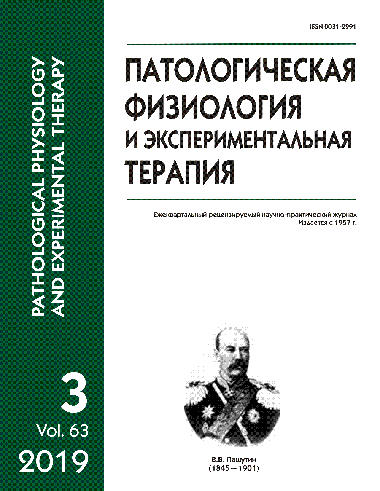The use of a immunohistochemical reaction for nestin in determining the size of brain injury after transient occlusion of the middle cerebral artery
Abstract
Evaluating the condition of astrocytes is important for assessment of brain injury. Aim. To develop a new approach to assessing the size of brain injury following focal transitional ischemia in the middle cerebral artery circulation using a immunocytochemistry reaction for nestin, a protein of intermediate filaments, which is considered a marker of stem cells. Methods. Injury of the rat brain was induced by 30-min occlusion of the left middle cerebral artery followed by 48-h reperfusion. A morphological study of endbrain serial frontal paraffin sections was performed. A 0.1% aqueous solution of Nissl cresyl violet (Dr. Grubler, Germany) was used for survey staining. The population of activated glial cells was examined using an immunocytochemical reaction for nestin with mouse monoclonal antibodies to nestin; viability of neurons was evaluated using an immunocytochemical reaction for NeuN. Results. The immunocytochemical reaction revealed a clear, linear immunopositive contour around the suggested infarct zone. In two days after unilateral ischemia, the cresylic violet staining showed that the center of damage was localized in the striatum and/or basolateral area. The light microscopy study of this contour (demarcation line) showed that it divided intact and damaged tissue. Conclusion. Therefore, nestin is a convenient marker of brain injury in experimental ischemic stroke. The immunocytochemical reaction in combination with quantitative analysis of scanned images is an optimum tool for determining the size of brain injury.






